On This Day…April 7th.
The date of April 7th was a day of utter desperation for the main Axis powers in WWII. In Germany the Luftwaffe launched operation ‘Sonderkommando Elbe’ while in the Pacific, the Japanese threw their last hopes behind Operation ‘Ten-go’.
Sonderkommando Elbe, literally ‘special command’ (the Elbe is a major European river of historical significance, a waterway the German sages proclaimed ‘carries the ashes of history’) saw the Luftwaffe sent 180 mainly student pilots into a de facto suicide mission.
The pilots were dispatched with stripped down 109’s that had virtually no fuel, reduced armament, ripped out armour, and just a few dozen rounds each. They were ordered to essentially ram the approaching bombers, picking specifically vulnerable points on the aircraft, before, “parachuting to safety”...
The allied bombers numbered over 1,300 Fortresses and Liberators and although only 15 bombers were hit by ramming tactics, 8 of these were completely destroyed.
Photo above shows the B-17 "E-Z Goin'". It was rammed by a Sonderkommando Elbe pilot, and her left stabilizer was ripped off, engine No. 1 was out, and rudder was unresponsive. Despite all this, the crew managed to return to England and land safely.
Below, the Messerschmitt BF 109 of Unteroffizier Heinrich Rosner that took part in the ramming down the B 24 Liberator “Palace of Dallas” (of the 389th Bomb Group) as well as a second and unknown B 24 Liberator. Successively ramming two planes (the second apparently accidental) with a single fragile fighter and ending the day alive is nothing short of extraordinary.
In Okinawa, the Japanese resorted to their own last ditch tactics, under ‘Operation Ten-Go’ (‘Ten-ichi-go’ - translated “heaven one”).
The essential plan was to run the Yamato and nine other battleships as a suicide strike force to halt the American advance at Okinawa. The strategy was to synchronise this attack with a ground counterattack on Okinawa and an air Kamikaze assault (that curiously never emerged, giving the Japanese task force no air cover).
Such was the poor decision making and resources of the Japanese attack that the main tension of the day became whether the prize of the Yamato would fall to the battleships (under Admiral Spruance) or the Carriers (guided by Vice Admiral Mitscher).
Eventually, it was the Air Goups of the Carriers that won the day, sinking the most powerfully armed battleship ever constructed.
The Hohenzollern Bridge (or at least what is left of it) over the Rhine in Cologne, April 7th, 1945.
Cromwell Mk. VII of the 2nd Battalion Welsh Guards hit by 7.5 cm KwK 40 fire at 600 yards - 7th April 1945. This was one of three tanks knocked out in an encounter with an unidentified German jagdpanzer. The tank was shot at 6 times and took 5 hits.
<!—- From the report:
Position of Hit:
a) Ragged penetration 95 x 120 mm. diameter through the left side of the hull above track guard under the rear end of the turret; b ) 74 mm. diameter smooth penetration in lower rear corner of the left rear side plate of the turret; c) 82 mm. diameter ragged penetration to the left of the engine just below the track guard; d) 81 mm. diameter penetration through the left side wall of the hull above the track guard, under the front end of the turret; e) scoop at junction of left side and roof to the turret.
Course & Effect of Projectiles:
The first shot missed.a) was the first shot to hit and it killed the Operator and wounded the Gunner and Commander, who baled out. The Driver was unhurt and stayed in as he was not given the order to evacuate. The path of this shot could not be traced. It started a small fire;
b ) was the second shot to hit and after it, the Driver baled out. It went across the turret and bounced off the opposite wall into the 2” smoke ammo. rack;
c) penetrated into the engine and was not traced;
d) went across the tank through the upper end of the vertical pillar at rear end of the partition between the Co-Driver’s and Driver’s compartments. The basal portion of this round (75 mm. Kw. K. Pak 40 A.P.C.B.C.) was found embedded, side foremost, in the wall of the hull on the right of the Driver’s compartment. The order of shots, c, d and e is not known.
Fate of Crew:
Driver: Unhurt. No Co-Driver in tank. Commander: Wounded a) traumatic amputation left leg below knee; b ) severe wounds right leg with compound fracture right fibula and much loss of muscle caused by T and T wound; c) small wound left chest wall with fractured rib. Discharged from hospital on crutches to sick leave, 1 August 1945.
Gunner: Wounded. a) posterior to anterior T and T wound middle 1/3 left upper arm with compound fracture humerus. X-ray shows no F.B’s; b ) 4” long laceration from 1” above mid-point between eye-brows to right parietal area with small depressed fracture of outer table frontal bone forehead; c) 2” long laceration left occipitoparietal area; d) 2” long laceration back of neck; e) flesh wounds over right and left scapulae; f) flesh wound left loin. Still in hospital 25 September 1945.
Operator: Killed by shot a). Driver looked round after shot a) to find him slumped down. Body eventually disintegrated by fire and explosion of contents of tank.—->
An F4U Corsair burned out on USS Hancock (CV-19) after a kamikaze attack off Okinawa - 7th April 1945
Below is the view of USS Hancock burning after being struck by the kamikaze above, off Okinawa, Japan, 7 Apr 1945. USS Essex's flight deck in foreground.
Beautifully timed photo of a M4 A3 and crew from 781st Tank Battalion waiting for orders to cross the river Naecker, Heilbronn, Germany.
USS Ranger (CV-4) transiting the Pedro Miguel Locks of the Panama Canal, April 7th, 1935.
America's fourth aircraft carrier, Ranger, was commissioned at Norfolk, Virginia, United States and although smaller than the USS Lexington and USS Saratoga, she was the first US carrier to be designed and built as a carrier from the keel up.
US soldiers of the (10th Armoured and 45th Division)of the 7th Army posing on a captured German ‘Rail Gun’ - Rentwerthausen, Germany.
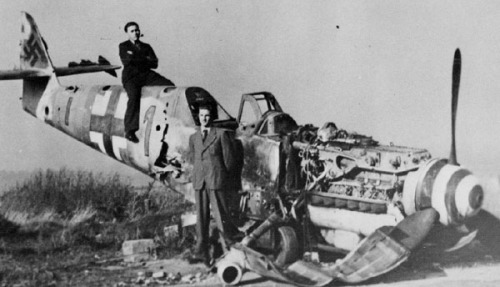
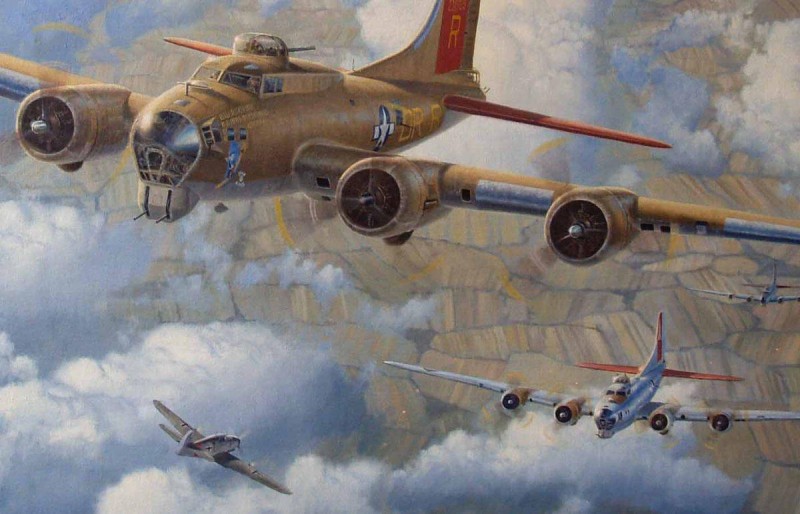
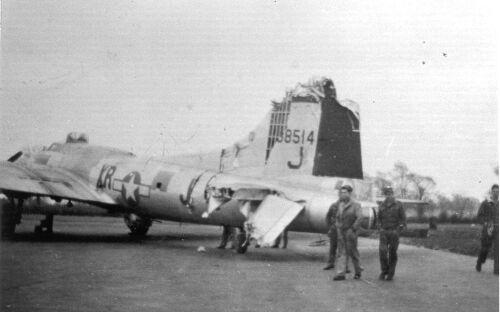
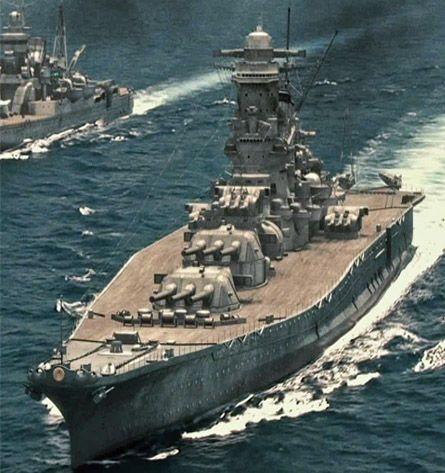


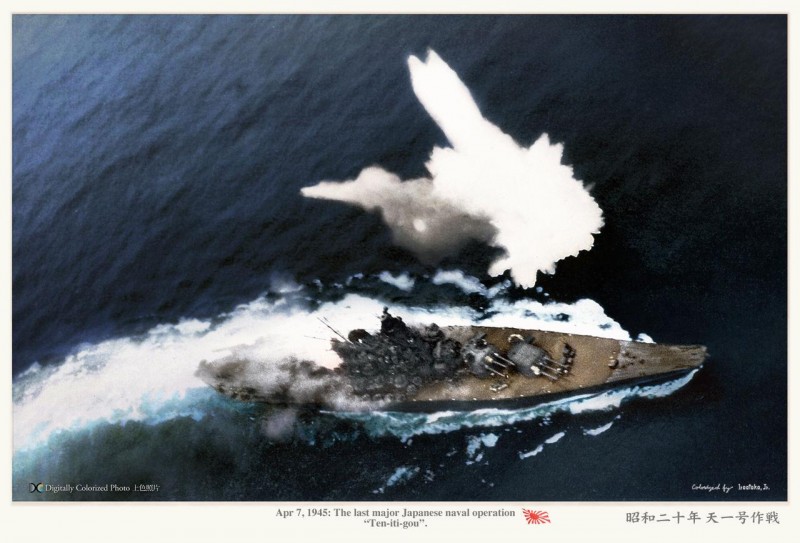
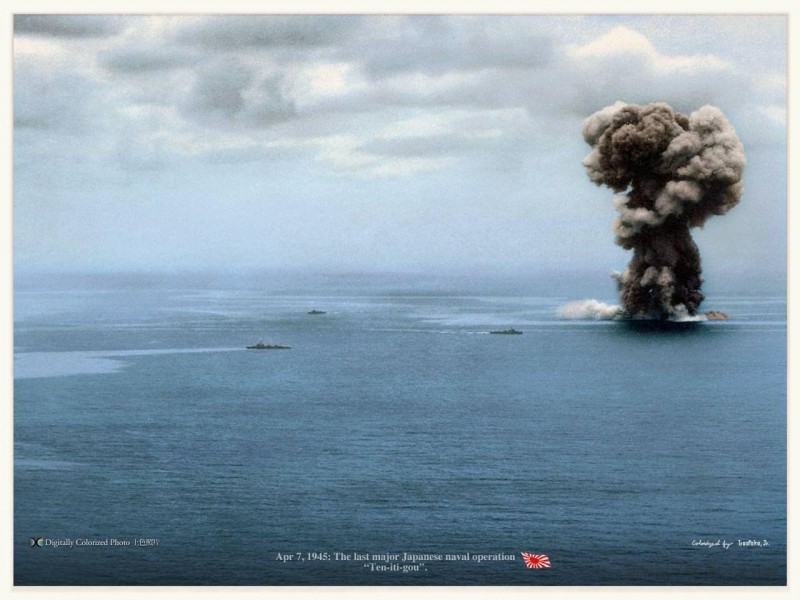
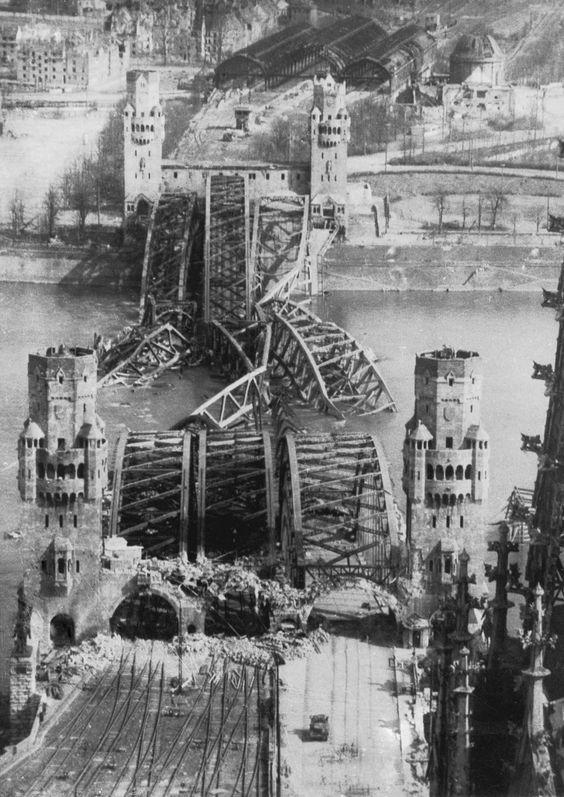
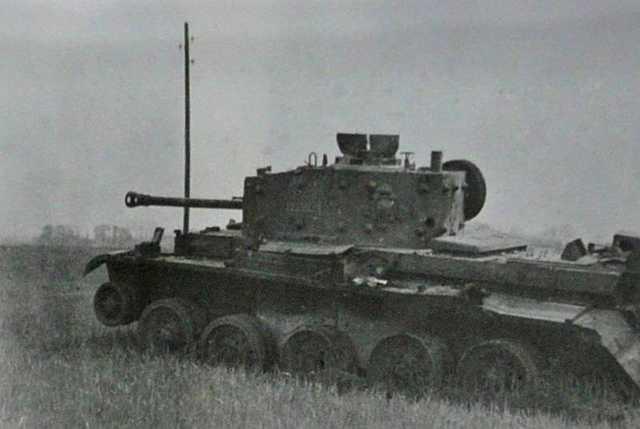
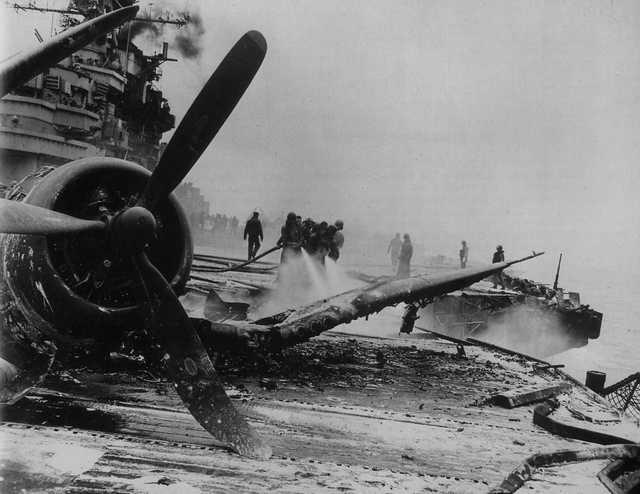

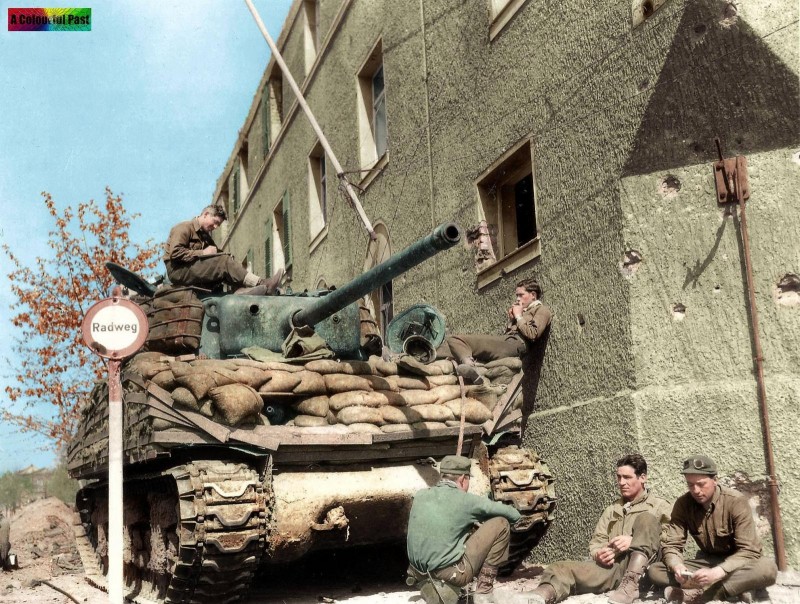
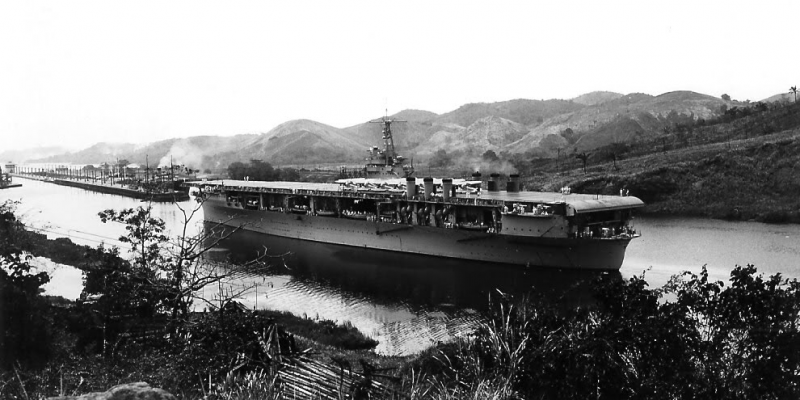
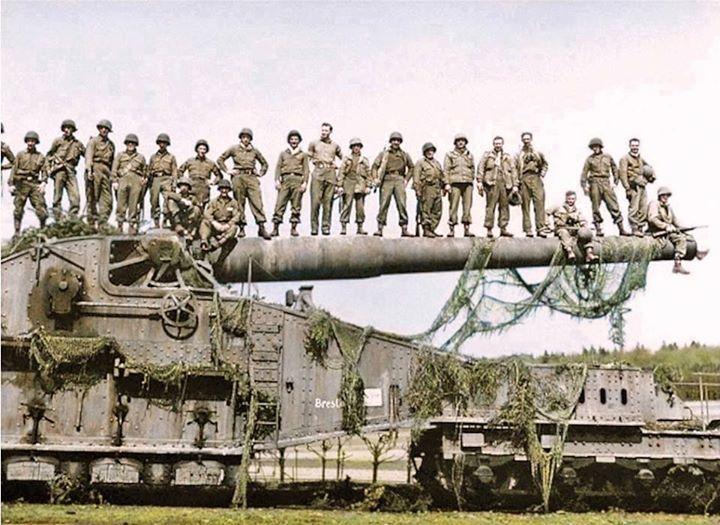
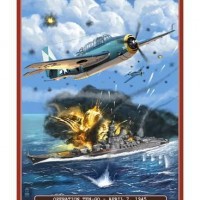
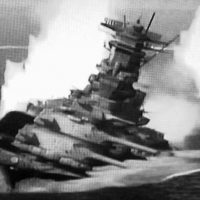
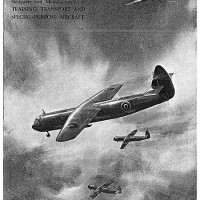

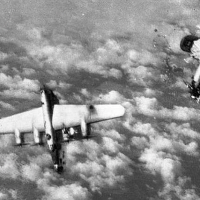
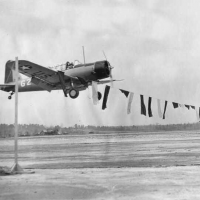
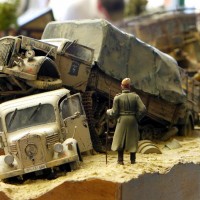


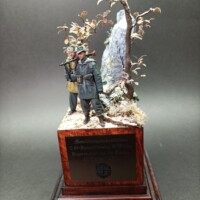
Nice set David!
Slight typo: Operation Ten-Go involved Yamato, a light cruiser and eight destroyers. Only the one battleship.
Good stuff as usual.
Yep, if anyone was going to pick up on that...
In my defence it was written just before my meds...
I had the good fortune to meet and talk a little while with an elderly gentleman who I met at the local airport about 12 years ago.
He claimed to be the youngest pilot in the US Navy at the time he served. He said that he was two weeks younger than the former US President George H W Bush who flew Avengers.
This gentlemen flew SB2C Helldivers and actually participated in sinking the Yamato “on this day” 74 years ago.
Unfortunately I don’t remember his name anymore but he was the owner and pilot of a Fleet Biplane at the Deland Airport.
Thanks again David for another excellent article.
“Liked”
You are welcome, Louis. It amazes me how many of the kids who signed up for service in WWII lied about their age to get in. It’s a sad fact that here we are on the cusp of that generation disappearing from us. Makes it all the more heartening to see our hobby thriving, with so many (especially younger) people taking up miniature/model building, keeping the stories, the people, and the amazing machines in our minds.
Thanks, Louis.
Great set of photos. Highlight of my day as usual when visiting my favourite Modeler site. Keep it up David!
To the photo from Heilbronn: The sign says: Bicycle-Road not allowed for any motorized vehicles.
I didn't know that they existed already at that time.
Annotation: the german spelling of the river is "Neckar".
Thank, Hans - that’s one big mother of a bicycle those guys have...